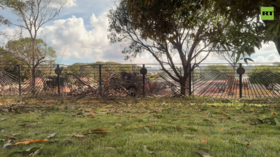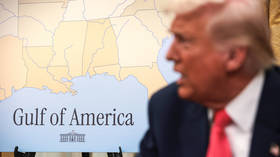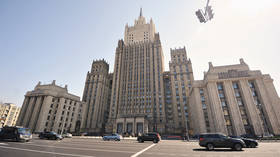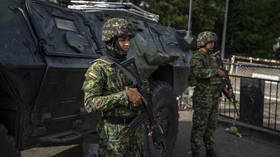Magadan: sorrow at world’s end
Almost twice the size of Portugal, the sparsely-populated Magadan Region is home to just 100,000 people who endure its harsh climate. It is rich in natural resources, but is also notorious for its sad, cruel past.
Located in Russia’s Far East and surrounded by mountains, the place is so remote that no train lines or roads reach it: one can only get here by sea or plane.
This was Russia’s El Dorado: full of gold, silver, tin and other resources. The main city in the region is Magadan, which is a port on the Sea of Okhotsk, and which served as a major transit center for prisoners sent to Stalin's labor camps.
The whole area is steeped with memories of the GULAG times [GULAG – Chief Administration of Corrective Labor Camps and Colonies], and the history of the region itself started with labor camps, in their cold barracks.
When gold was discovered here at the end of the 1920s, the Soviet government developed a vast network of labor camps, which exploited more than 2 million prisoners and exiles.
Among them were criminals and Nazi-collaborators, as well as innocent people, who were accused of state treason. In the Stalin era, just a wrong word could get anyone to these places.
“Not guilty of anything”
Antonina Novosad was arrested and sent to Magadan from Ukraine in 1947.
“I was convicted of state treason. A 20-year-old girl – I wasn’t guilty of anything of course. But at that time if they wanted to arrest you, they would always find a reason. There was no court here or anything, just three people sat there and made the decision. A word, song – anything could get you sent to these places,” the woman recalls.
Antonina spent nine years working in the tin mines.
“We worked in harsh conditions, but at least no one touched us or beat us, or anything,” she continued. “We worked as much as we could, just for a piece of bread. There was nowhere to run, we were surrounded by mountains.”
More than 100 thousand people died in these mountains of hunger and cold. In some places, the temperatures in winter dropped to minus 50 degrees Celsius (minus 58 Fahrenheit). It was thought a healthy man could survive no more than three winters in those conditions.
Ships filled with prisoners docked in the bay at Magadan. It is here the prisoners’ ordeal began: one in seven never survived it.
The human price paid for getting hold of the region’s riches was enormous.
“I would never justify the methods used by the GULAG system,” a historian, Ivan Pankratov, says. “But, it was partly the gold mine here that helped us win the Second World War and pay for the goods and weapons that we bought from the US under the land lease program.”
Prisoners serving their sentences between 1937 and 1938 faced the bloodiest period in the history of the Kolyma labor camps, when certain numbers of people were ordered by Moscow to be killed as public enemies, with no specific charges brought against them.
Thousands were shot at that time, and their bodies thrown down a hill. The mass-grave was discovered when people started prospecting for gold. Instead of its riches, the soil then gave up its deadly secrets.
Time to remember
Natalia Verkina, a local resident and granddaughter of an exile, tells her story:
“My grandfather was captured by the Germans at the beginning of WWII and then released by the Red Army at the very end of the war. He – I think it was just common procedure – was sent to Kolyma.
“He was allowed to work, he lived – if we can say so – a normal life, with the only exception that he was not allowed to leave the Magadan area for six years. And there was a list of cities, including Moscow, Leningrad and Kiev, that he was not allowed to visit any longer,” Natalia told RT.
The road to the long-forgotten camps is not easy. Vladimir Naiman, a gold miner and a son of an exile, has been traveling to the region for years now, to pay tribute to the GULAG victims and setting crosses at their burial sites.
His father was exiled to Magadan shortly after WWII. He was a German born in the Soviet Union. Even though Vladimir’s father did not serve time in the camp, he says it is his duty to come and pay respects.
“Camp prisoners used to say, ‘When we die here, we won’t even get a cross or even plaque on our graves.’ They deserve these crosses, even decades later. I just wanted to remind people about the human price it took to develop the region,” the man says.
"Let's not mix"
Father David, a priest at the local Catholic Church, met some of the GULAG victims.
“We undertake serious efforts to help them rehabilitate. At the beginning, they hesitated to even talk about their lives and what had happened to them. ‘You are not KGB?’ they asked us at the beginning. And then slowly, they became willing to talk about it, tell their stories and even have them published in the book we’ve put together, so that people remember what happened here,” he said.
Speaking of the comparisons some make between the Nazi concentration camps and the GULAG, Father David has said:
“There wasn’t often just a direct intention to kill people. These are harsh and severe places.”
Roman Chaikovsky, a professor at Magadan University, had his personal reasons to devote his life to studies of the subject:
“When my father was arrested, we were exiled to the Far East. And my uncle, Father’s brother, was a prisoner in the German camps. He wrote a book about those years, and when my father read it, he said: ‘The Soviet camps were terrible, but the German camps were even worse.’ Of course, it was my duty to study the history of the GULAG.”
“My friends do not know much about the GULAG camps, but anyway, they do not compare them to the Nazi camps, where people were killed for what [religion or ethnicity] they were. Here, people were jailed to work for what they did or fought for. So it’s totally different and let’s not mix that,” a tourist from Switzerland, Patrick Gauchat, told RT.
Camp "language"
But how did people from different social strata and ethnicities communicate inside those camps? Elena Kharitonova, a linguist specializing in camp jargon, provided some perspective.
“It is better to speak of a camp language [rather than jargon], given the great number of people who used it. But of course, it was different from the normal language. Just try to imagine all those people from completely different social strata,” the expert said.
“So camp language – it was like a melting pot – contained thieves’ lingo, official terms and of course the prisoners’ slang, and even curse-words,” she continued.
As an instance, a particular kind of the GULAG officer was referred to as godfather of one’s child, or “kum” in Russian.
“Other examples could hardly be rendered into English, because they were very specifically Russian,” Elena Kharitonova explained.
Many of the prisoners released at the end of the 1950s, when all camps were shut down, stayed in Magadan. They raised their families here, who will never forget that the history of this remote Russian region started in the barracks.











